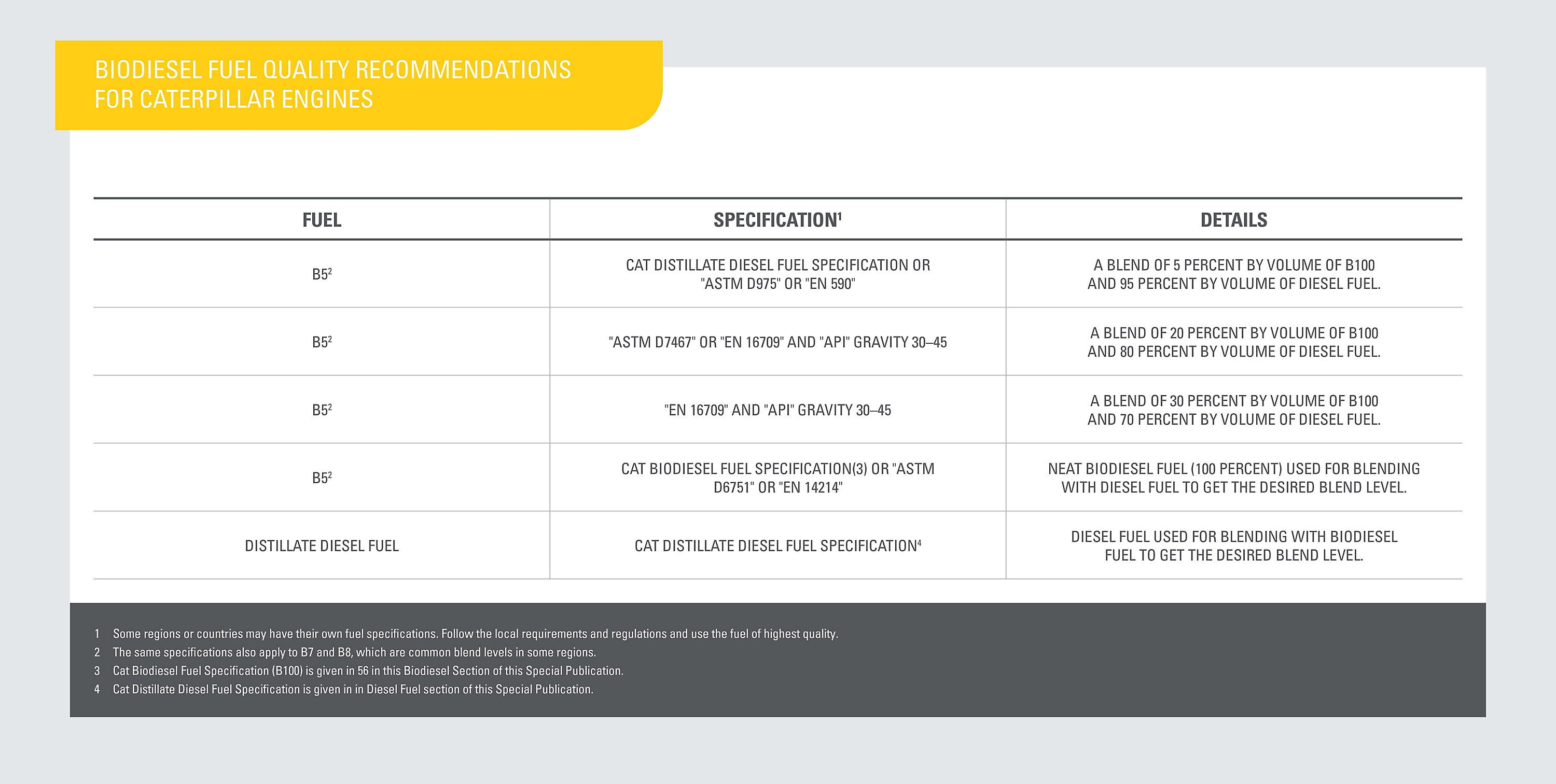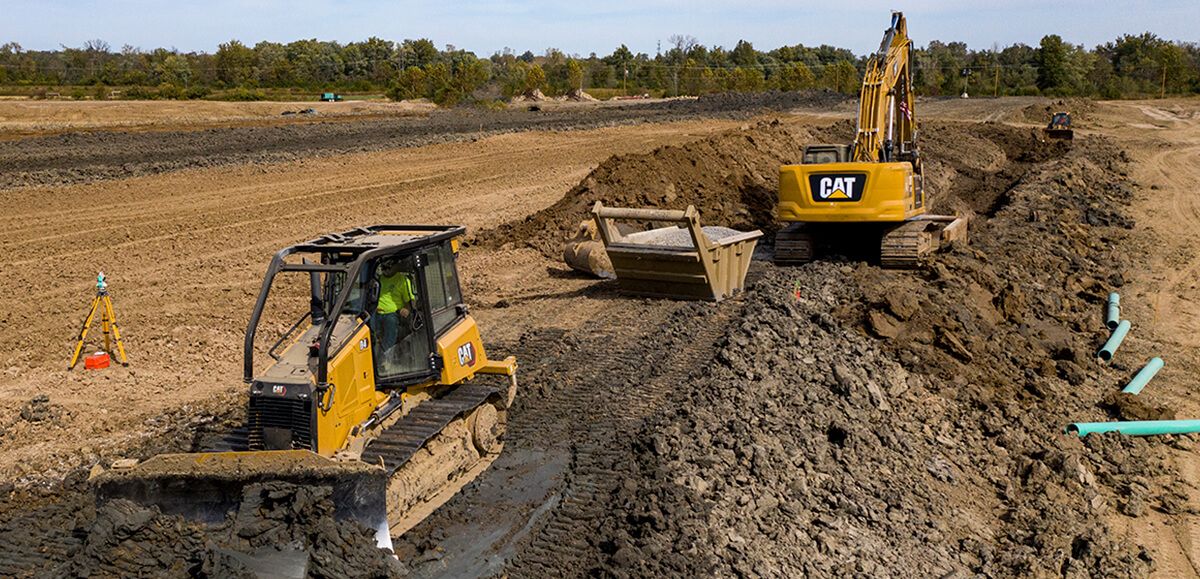

Sign In
Welcome! Sign In to personalize your Cat.com experience
If you already have an existing account with another Cat App, you can use the same account to sign in here
Register Now
One Account. All of Cat.
Your Caterpillar account is the single account you use to log in to select services and applications we offer. Shop for parts and machines online, manage your fleet, go mobile, and more.
Account Information
Site Settings
Security
Making a Sustainable Choice with Biodiesel
The biggest expense for any piece of machinery is the fuel to keep it running and working. Fuel costs can vary over time, so it’s important to know what alternative biofuels, such as biodiesel, are available. But not all fuels behave the same inside an engine, so it’s important to know how biofuels work.
Estimated read time: 6 minutes
Running biodiesel in your equipment can be a reliable way to replace petroleum sourced diesel fuel with renewable home-grown source. But biodiesel requires more handling and management care than conventional diesel fuel. Here’s how to understand those differences and how to run biofuel successfully in your machines.
Biodiesel Basics
Biodiesel is manufactured from vegetable oils, animal fats, and even recycled grease from restaurants. Biodiesel can also be made from natural gas, carbon dioxide.
Because it’s made from these sources, biodiesel is both a renewable fuel and a biodegradable substance. It is a “green” option for fleets running diesel powered equipment. And it’s often blended with conventional diesel fuels.
The raw oils or animal fats used to make biodiesel are chemically processed (esterified) to form a fatty acid called methyl ester (referred to as FAME). The oil or fat must be esterified, and water and contaminants should be removed.
Which Biodiesel Blend Should You Use?
Biodiesel fuel is acceptable for use in Cat® machines. The fuel's quality is the principal factor in successfully running biodiesel. Here are common blends and the quality levels needed:
B5 is a blend of up to 5% biodiesel by volume in 95% diesel fuels. This is common in the United States and can be sold without any labeling indicating that biodiesel is contained in the finished fuel.
B20 is up to 20% biodiesel and 80% diesel by volume. It’s a common blend in the U.S. and in other areas of the world. The specification is ASTM D7467. B20 is acceptable in most Cat engines, including Tier 4 engines.
B100 biodiesel, or neat biodiesel, is 100% FAME. This is acceptable in many Cat engines. The specification is ASTM D6751.
Benefits of Making the Switch to Biofuels
Biodiesel offers these advantages for your business:
It is a renewable, nontoxic and biodegradable fuel.
It reduces tailpipe particulate matter, hydrocarbon and carbon monoxide emissions from most modern diesel engines.
It has high lubricity, which reduces friction.
It has a high cetane number; B5 biodiesel blends have the same attributes as diesel fuel.
Be Knowledgeable About Higher Blend Levels
Biodiesel fuels with more than 5% biodiesel require more management. Here are some things to be aware of for these more concentrated formulas:
B20 is rather common and mandated in some states in the U.S. Be aware of the age of B20 and its storage. Quality B20 can be stored for eight months. You need to test it for quality after that.
At B100, biodiesel has about 8% lower energy density than diesel. At B20 or lower blend levels, the energy density difference from diesel fuel is not significant.
Biodiesel has shorter storage life due to lower oxidation stability than diesel fuel.
Cold temperature operability is different than diesel fuel.
Materials compatibility is more restricted than diesel fuel. Cat engines use compatible elastomers.
Higher biodiesel concentrations are more likely to dissolve and absorb water than diesel fuel.
Use of biodiesel in engines with aftertreatment devices is limited to B20. This is due to metals that naturally occur in biodiesel (phosphorus, sodium, calcium, potassium and magnesium).
Contaminants such as glycerides, mono and diesters and sterol glucosides can be present after an incomplete purifying process. These contaminants can cause early filter plugging.
Expect a higher propensity for microbial growth due to the biodegradable nature of biodiesel and to the tendency of higher water absorption.
Caterpillar Recommendations for Biodiesel Fuel Use
This chart shows which biodiesel blend levels are acceptable for use in Cat engines.

Additionally, Caterpillar recommends biodiesel fuel must meet these standards.

In North America, Caterpillar recommends using biodiesel from BQ-9000 accredited producers and BQ-9000 certified marketers. These fuels are marked with a certification logo.
In other areas of the world, biodiesel must be BQ-9000 accredited and certified — or certified by a comparable biodiesel quality control program.
Operational Factors to Consider
Consult with your Cat dealer for full details on how to safely use biodiesel fuel in your equipment.
Here are just a few of the changes to monitor when using biodiesel:
Biodiesel increases dilution of engine oil. To monitor oil condition, use Cat S•O•SSM analysis services.
Confirm with the filter manufacturer that your fuel filters are compatible with biodiesel. Fuel water separators are recommended for biodiesel use.
Particularly for blends higher than B5, you’ll want to change fuel filters more often for roughly the first 50 hours. This only applies to your first use of the fuel. Biodiesel can loosen deposits in tanks, pipes and plug filters. But once the deposits are removed, you can return to regular filter service intervals.
Check the condition of gaskets, seals and hoses regularly. The risk of degradation increases with the increase of biodiesel blend levels.
Monitor fuel transfer line hose condition and confirm with the hose manufacturer that the hoses are compatible with the biodiesel blend used. If necessary, replace with hoses of compatible materials.
Biodiesel fuels may gel or freeze at low temperatures. Make sure the biodiesel pour point is appropriate for the climate of the application. Gelling of biodiesel increases with the increase of blend levels and may depend on the biodiesel feedstock (soy, used cooking oil, animal fats, palm and others).
Ready to Make the Switch?
Lower blends of biodiesel fuel can cut your fuel costs while reducing diesel emissions. Plus, your business could earn a “green” reputation. For more details on proper biodiesel use, consult the Caterpillar Machine Fluids Recommendations Manual or talk to your Cat dealer for in-depth help.
Please consult your Cat dealer or Caterpillar Machine Fluids Recommendations (SEBU6250) for details.
Learn more about fuel and increasing fuel efficiency.
Once You Own, You're In
Gain unlimited access to must-know information about your machine. Find ideas you can put to work on the job right away, including business insights.


